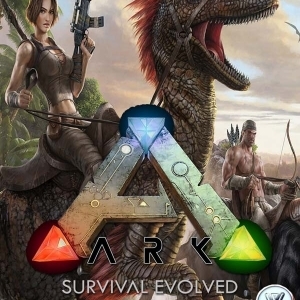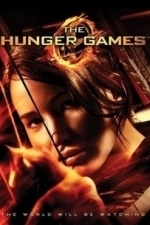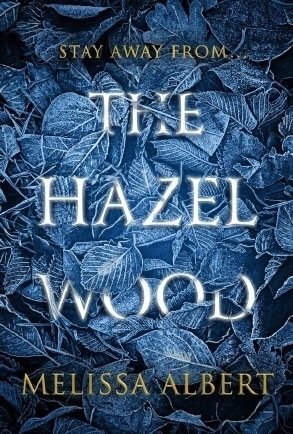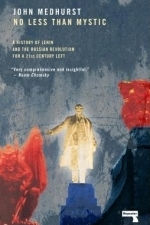Search
Search results
Lee (2222 KP) rated Brightburn (2019) in Movies
Jun 11, 2019
What if Clark Kent grew up to be evil? What if, instead of growing up to be this all powerful protector of Earth and humanity, he decided he wanted to take the world, cruelly toying with and destroying humanity in the process? That's the premise behind Brightburn, a superhero horror movie from producer James Gunn, of Guardians of the Galaxy fame. Comic books are littered with plenty of 'what if' story-lines and alternate takes on popular superheroes, but up until now probably the most famous onscreen version of an evil Superman we've seen was in Superman III. And even then we only really got a drunk, unshaven, but still family friendly Superman, who felt a bit mischievous and blew out the Olympic torch for a bit of a laugh. Brightburn goes a lot darker, leaning heavily into horror with some wonderful, wince-inducing gory moments. If you're looking for Dark Phoenix levels of dark - moody, crying in the corner, that kind of thing - then you're going to be disappointed.
Brightburn begins by mirroring the origin story of Superman very closely - even the soundtrack reminded me of the music from 2013 movie Man of Steel on more than one occasion! Tori (Elizabeth Banks) and Kyle Bryer (David Denman) are a happily married couple, living on a farm and longing for a child of their own. And then one night, a meteor crash lands out in the nearby woods, bringing them a baby boy who they adopt as their own. We see home movies of a normal baby/toddler as he grows up as part of a normal, loving family. And then we move forward 10 years to present day.
As an adolescent, Brandon (Jackson A. Dunn) begins to experience some change in his life. His parents put it down to hormones, and attempt to give him the talk on girls and the facts of life, but it's a lot more than that. The rock shaped vessel which carried Brandon to Earth as a baby has been locked away in the family barn all these years, hidden from Brandon, but has now started glowing red. At the same time, something within Brandon appears to have been activated, and a number of small but disturbing incidents that follow leave his parents worried. They also realise that they've never actually seen their son bleed, or even hurt before. From there, the severity of these incidents increases greatly, and it becomes clear that there is definitely something very, very wrong with Brandon.
What I loved about Brightburn was the confined, low key setting of it all. The action is restricted primarily to the town of Brightburn, never really expanding into the worldwide, CGI heavy destruction of other superhero movies. We have an incredibly relatable mother who is out to love and protect her son until the bitter end, a father who becomes scared and horrified by everything that is unfolding, and then this powerful boy tearing the family apart - unpredictable and showing no sign of remorse or inner turmoil over everything that is happening. Outside of that, the action is confined to a relatively small cast - the local police, extended family and some other kids from school who we all follow throughout the movie - there's a lot of character depth to be found in Brightburn, which greatly adds to its overall enjoyment.
As is the norm these days though, the trailer does give away the majority of Brandon's targets and where he attacks them, meaning you kind of know what to expect for a lot of it. However, what the trailer doesn't give away is the atmosphere and the eeriness that builds to each of those shocking (and gory) moments and there are still plenty of jump scares and shocking scenes to keep you on your toes throughout. It builds to a climax which once again isn't a CGI overload, relying on shock and horror to deliver it's interesting conclusion. And, most importantly, it leaves the door open for what could be a very interesting sequel. I'm all up for that, and the direction that hints at, as I found Brightburn to be a very enjoyable and fresh take on the superhero genre.
Brightburn begins by mirroring the origin story of Superman very closely - even the soundtrack reminded me of the music from 2013 movie Man of Steel on more than one occasion! Tori (Elizabeth Banks) and Kyle Bryer (David Denman) are a happily married couple, living on a farm and longing for a child of their own. And then one night, a meteor crash lands out in the nearby woods, bringing them a baby boy who they adopt as their own. We see home movies of a normal baby/toddler as he grows up as part of a normal, loving family. And then we move forward 10 years to present day.
As an adolescent, Brandon (Jackson A. Dunn) begins to experience some change in his life. His parents put it down to hormones, and attempt to give him the talk on girls and the facts of life, but it's a lot more than that. The rock shaped vessel which carried Brandon to Earth as a baby has been locked away in the family barn all these years, hidden from Brandon, but has now started glowing red. At the same time, something within Brandon appears to have been activated, and a number of small but disturbing incidents that follow leave his parents worried. They also realise that they've never actually seen their son bleed, or even hurt before. From there, the severity of these incidents increases greatly, and it becomes clear that there is definitely something very, very wrong with Brandon.
What I loved about Brightburn was the confined, low key setting of it all. The action is restricted primarily to the town of Brightburn, never really expanding into the worldwide, CGI heavy destruction of other superhero movies. We have an incredibly relatable mother who is out to love and protect her son until the bitter end, a father who becomes scared and horrified by everything that is unfolding, and then this powerful boy tearing the family apart - unpredictable and showing no sign of remorse or inner turmoil over everything that is happening. Outside of that, the action is confined to a relatively small cast - the local police, extended family and some other kids from school who we all follow throughout the movie - there's a lot of character depth to be found in Brightburn, which greatly adds to its overall enjoyment.
As is the norm these days though, the trailer does give away the majority of Brandon's targets and where he attacks them, meaning you kind of know what to expect for a lot of it. However, what the trailer doesn't give away is the atmosphere and the eeriness that builds to each of those shocking (and gory) moments and there are still plenty of jump scares and shocking scenes to keep you on your toes throughout. It builds to a climax which once again isn't a CGI overload, relying on shock and horror to deliver it's interesting conclusion. And, most importantly, it leaves the door open for what could be a very interesting sequel. I'm all up for that, and the direction that hints at, as I found Brightburn to be a very enjoyable and fresh take on the superhero genre.

Ten Junk Miles
Podcast
A lighthearted conversation by trail, road, and ultra runners about their lives as runners and the...

ARK Survival Evolved
Video Game
Stranded on the shores of a mysterious island, you must learn to survive. Use your cunning to kill...
Movie Metropolis (309 KP) rated The Hunger Games (2012) in Movies
Jun 10, 2019
Director Gary Ross had his work cut out trying to create a film which brought to life the startling realism of Suzanne Collins’ successful trilogy of novels and here we have the first, The Hunger Games.
This film has come at a time where movie fans have been released from the clawing hooks of the Harry Potter franchise and the finale of the Twilight Saga is now on the horizon. Some would say, it’s the perfect time to begin a new franchise and for the most part, they’re right. Move over witches and vampires, there’s a new, more mature kid ready to take your crowns.
I for one went into The Hunger Games trilogy blindfolded. I have not read the books so this review is purely based on the film I saw before me and I must say; I was mightily impressed.
The film is set some way in the future and the world is a much different place; in a place called Panem (a post-apocalyptic North America) is where we find 12 Districts full of variety with different races living alongside each other, just as we have today. However, there is a more sinister side to things as we learn that once a year; The Hunger Games tournament takes place.
For those of you not familiar with the event itself, here’s a brief description. Each year, one boy and one girl aged between 12 and 18 from each district fights to the death until there is one winner, showered with riches for the remainder of their lives.
Jennifer Lawrence of X-Men First Class fame stars as Katniss Everdeen, a plucky young girl brought up in the coal mining community of District 12. After her young sister is picked to represent District 12, she decides the only thing to do is nominate herself and save her from certain death. Her male counterpart is Peeta Mellark played by a mature looking Josh Hutcherson of Journey to the Centre of the Earth fame.
Once the pair have been selected, they are taken to Capitol, a city brimming with the wealthy, a stark contrast to the coal mining community our District 12 heroes come from. Woody Harrelson stars as a previous winner of the games and the District 12 mentor, he takes it upon himself to train the ‘tributes’ and prepare them for the task ahead.
Once in battle, all chaos ensues and this is where the film begins to partially unravel. The actors and actresses all do excellent jobs, in particular Lawrence plays Katniss exceptionally well, her soft side comes through but you never forget her harsher, hunter like persona. Unfortunately, the action is held back by the ridiculous 12A certification the film has been lumbered with. It has become the case, as with The Woman in Black earlier this year that films based on best-selling and well known books or with teen stars have to be given this frankly dire classification. The violence is toned down to such a level that it becomes unrealistic and from what I have read, The Hunger Games is a much more brutal and unforgiving experience as a novel.
Other negatives include some shoddy CGI and too much hand based camera work, the battles at the beginning of the games are messy and not enjoyable to sit through. It’s a disappointing lapse in a film which is actually very good indeed.
Thankfully, the lengthy running time allows the final third to pick up nicely to leave you with a lasting impression.
The Hunger Games had the unenviable task of being on the receiving end of comparisons to Harry Potter and the Twilight franchises, and to an extent it has done its source material proud. Does it live up to the much-loved world of Hogwarts? Probably not. Does it live up to the lust and romance of the Twilight Saga? Most definitely. It sits, right smack in the middle and that’s not a bad place to be.
Gary Ross has produced a fine blockbuster with excellent performances from the cast and some fabulous design choices. Yes, it’s a little too long, there are some shoddy special effects and the character development lacks depth, but for fans of the series and newcomers alike, it moves the game on and is an enjoyable experience.
https://moviemetropolis.net/2012/04/05/the-hunger-games-2012-review/
This film has come at a time where movie fans have been released from the clawing hooks of the Harry Potter franchise and the finale of the Twilight Saga is now on the horizon. Some would say, it’s the perfect time to begin a new franchise and for the most part, they’re right. Move over witches and vampires, there’s a new, more mature kid ready to take your crowns.
I for one went into The Hunger Games trilogy blindfolded. I have not read the books so this review is purely based on the film I saw before me and I must say; I was mightily impressed.
The film is set some way in the future and the world is a much different place; in a place called Panem (a post-apocalyptic North America) is where we find 12 Districts full of variety with different races living alongside each other, just as we have today. However, there is a more sinister side to things as we learn that once a year; The Hunger Games tournament takes place.
For those of you not familiar with the event itself, here’s a brief description. Each year, one boy and one girl aged between 12 and 18 from each district fights to the death until there is one winner, showered with riches for the remainder of their lives.
Jennifer Lawrence of X-Men First Class fame stars as Katniss Everdeen, a plucky young girl brought up in the coal mining community of District 12. After her young sister is picked to represent District 12, she decides the only thing to do is nominate herself and save her from certain death. Her male counterpart is Peeta Mellark played by a mature looking Josh Hutcherson of Journey to the Centre of the Earth fame.
Once the pair have been selected, they are taken to Capitol, a city brimming with the wealthy, a stark contrast to the coal mining community our District 12 heroes come from. Woody Harrelson stars as a previous winner of the games and the District 12 mentor, he takes it upon himself to train the ‘tributes’ and prepare them for the task ahead.
Once in battle, all chaos ensues and this is where the film begins to partially unravel. The actors and actresses all do excellent jobs, in particular Lawrence plays Katniss exceptionally well, her soft side comes through but you never forget her harsher, hunter like persona. Unfortunately, the action is held back by the ridiculous 12A certification the film has been lumbered with. It has become the case, as with The Woman in Black earlier this year that films based on best-selling and well known books or with teen stars have to be given this frankly dire classification. The violence is toned down to such a level that it becomes unrealistic and from what I have read, The Hunger Games is a much more brutal and unforgiving experience as a novel.
Other negatives include some shoddy CGI and too much hand based camera work, the battles at the beginning of the games are messy and not enjoyable to sit through. It’s a disappointing lapse in a film which is actually very good indeed.
Thankfully, the lengthy running time allows the final third to pick up nicely to leave you with a lasting impression.
The Hunger Games had the unenviable task of being on the receiving end of comparisons to Harry Potter and the Twilight franchises, and to an extent it has done its source material proud. Does it live up to the much-loved world of Hogwarts? Probably not. Does it live up to the lust and romance of the Twilight Saga? Most definitely. It sits, right smack in the middle and that’s not a bad place to be.
Gary Ross has produced a fine blockbuster with excellent performances from the cast and some fabulous design choices. Yes, it’s a little too long, there are some shoddy special effects and the character development lacks depth, but for fans of the series and newcomers alike, it moves the game on and is an enjoyable experience.
https://moviemetropolis.net/2012/04/05/the-hunger-games-2012-review/
Hazel (2934 KP) rated The German Wife [Audiobook] in Books
Jan 9, 2022
This book is a departure from my usual but I thoroughly enjoyed it. I usually read crime/thriller books but I do have an interest in the World Wars and this sounded like something a bit different so I took a punt and I definitely wasn't disappointed.
With strong characters, a riveting story line blended between real events and fiction, this book had me hooked from the very beginning to the very end. It's a story of love and survival set amongst the horrors of World War II. It's told from the German perspective and provides an illuminating insight into what life was like for a German SS Officer sent to Dachau in order to further his medical experiments and his wife. I'm not going to lie, this is a tough read in parts as you would expect from the subject matter but it's not overly gratuitous.
This book is filled with moral dilemmas and whilst I didn't want to like or sympathise with any of the main characters, I found myself torn and asking myself the question "what would you have done in the same situation?" I absolutely do not condone in any way, shape or form, the horrors inflicted by the Nazis on their fellow human beings but this book does make you question what you would have done had you been in their shoes. I would hope to think that I would make different choices in the beginning but hindsight is a wonderful thing!
This is a story about love and hope amongst horror and fear and one that I would recommend to others who enjoy this genre.
I must give a shout out to the narrator, Tamsin Kennard, her voice absolutely drew me in completely and was perfect for this book.
Many thanks to Bookouture and NetGalley for my copy in return for an honest, unbiased and unedited review.
With strong characters, a riveting story line blended between real events and fiction, this book had me hooked from the very beginning to the very end. It's a story of love and survival set amongst the horrors of World War II. It's told from the German perspective and provides an illuminating insight into what life was like for a German SS Officer sent to Dachau in order to further his medical experiments and his wife. I'm not going to lie, this is a tough read in parts as you would expect from the subject matter but it's not overly gratuitous.
This book is filled with moral dilemmas and whilst I didn't want to like or sympathise with any of the main characters, I found myself torn and asking myself the question "what would you have done in the same situation?" I absolutely do not condone in any way, shape or form, the horrors inflicted by the Nazis on their fellow human beings but this book does make you question what you would have done had you been in their shoes. I would hope to think that I would make different choices in the beginning but hindsight is a wonderful thing!
This is a story about love and hope amongst horror and fear and one that I would recommend to others who enjoy this genre.
I must give a shout out to the narrator, Tamsin Kennard, her voice absolutely drew me in completely and was perfect for this book.
Many thanks to Bookouture and NetGalley for my copy in return for an honest, unbiased and unedited review.
Hazel (1853 KP) rated The Hazel Wood in Books
Nov 12, 2017
MARVEL-ous, apparently
I received this ARC for free from the Penguin Platform Team.
“Imagine Marvel did fairy tales …” Well, I cannot because I have never seen a Marvel film but I understand the sentiment. The Hazel Wood by Melissa Albert is a book where fairy tales and reality collide. However, these are not stories full of glamour and grandeur, they are the sort originally told by the Jacob and Wilhelm Grimm during the 19th Century. What begins as a fairly realistic tale rapidly spirals into chaos when characters from a book start appearing in New York, something that should be impossible.
For seventeen years, Alice and her mother, Ella, have been travelling on the roads, barely stopping in places for more than a few months. It would be nice to have a home and settle down, however, they are always chased by bad luck, causing them to flee at any moment. Alice is not sure of the cause of their misfortune but suspects it may have something to do with her reclusive grandmother who lives alone on her estate titled the Hazel Wood. Alice’s grandmother wrote Tales From the Hinterland, a book of pitch-dark fairy tales, many years ago and it has become a rare piece of literature – a collector’s item; not even Alice has read it. But when her mother goes missing under suspicious circumstances, Alice wishes she had.
Homeless without her mother, Alice seeks help from a school acquaintance, Ellery Finch, whom she knows is a fan of her grandmother’s work. Yet, before they can formulate a plan to locate her mother, the cause of her bad luck reveals itself in the form of impossible, murderous fairy-tale characters. As Alice learns more about the Hinterland, she discovers that she has been receiving glimpses of the characters all her life.
Alice is in danger, as is Ellery, but she will stop at nothing to retrieve her mother, even venturing into the Hazel Wood – a place she has been forbidden to enter. With Ellery using his father’s wealth and connections, the two make a long journey to the place they believe her mother is being held, but what Alice finds there is more dangerous and shocking than she could ever imagine.
Retellings of fairy tales have become a popular genre in recent years, particularly amongst young adult literature. The Hazel Wood, however, is only loosely based upon ideas featuring in ancient folktales; the stories themselves have been thought up by Melissa Albert with unique characters such as Twice-Killed-Catherine and Three-Times-Alice. Although it is often fun to analyse the comparisons and differences between old tales and new, it is refreshing to come across brand new fairy tales.
Initially, the book comes across as a thriller and mystery set in the real world, however, fantasy elements quickly creep in. Two-thirds of the way into the story, the setting and genre change direction, introducing a fictional world where rules of nature have gone out of the window. At this point, it becomes slightly confusing to fully visualize the situation, and the storyline begins to get darker and darker.
Children’s fairy tales always have a happy-ever-after, however, the traditional ones rarely did, therefore, it is impossible to guess how The Hazel Wood will end. This, along with humour and enchanting action, hooks the reader and, according to other reviewers, has resulted in many hours slipping away without notice.
The Hazel Wood is a unique story on the cusp of young adult and adult fiction. It is not only a good work of fiction; it is clever and well thought out, too. Melissa Albert is certainly an author to look out for, especially if you like dark mysteries and thrillers.
“Imagine Marvel did fairy tales …” Well, I cannot because I have never seen a Marvel film but I understand the sentiment. The Hazel Wood by Melissa Albert is a book where fairy tales and reality collide. However, these are not stories full of glamour and grandeur, they are the sort originally told by the Jacob and Wilhelm Grimm during the 19th Century. What begins as a fairly realistic tale rapidly spirals into chaos when characters from a book start appearing in New York, something that should be impossible.
For seventeen years, Alice and her mother, Ella, have been travelling on the roads, barely stopping in places for more than a few months. It would be nice to have a home and settle down, however, they are always chased by bad luck, causing them to flee at any moment. Alice is not sure of the cause of their misfortune but suspects it may have something to do with her reclusive grandmother who lives alone on her estate titled the Hazel Wood. Alice’s grandmother wrote Tales From the Hinterland, a book of pitch-dark fairy tales, many years ago and it has become a rare piece of literature – a collector’s item; not even Alice has read it. But when her mother goes missing under suspicious circumstances, Alice wishes she had.
Homeless without her mother, Alice seeks help from a school acquaintance, Ellery Finch, whom she knows is a fan of her grandmother’s work. Yet, before they can formulate a plan to locate her mother, the cause of her bad luck reveals itself in the form of impossible, murderous fairy-tale characters. As Alice learns more about the Hinterland, she discovers that she has been receiving glimpses of the characters all her life.
Alice is in danger, as is Ellery, but she will stop at nothing to retrieve her mother, even venturing into the Hazel Wood – a place she has been forbidden to enter. With Ellery using his father’s wealth and connections, the two make a long journey to the place they believe her mother is being held, but what Alice finds there is more dangerous and shocking than she could ever imagine.
Retellings of fairy tales have become a popular genre in recent years, particularly amongst young adult literature. The Hazel Wood, however, is only loosely based upon ideas featuring in ancient folktales; the stories themselves have been thought up by Melissa Albert with unique characters such as Twice-Killed-Catherine and Three-Times-Alice. Although it is often fun to analyse the comparisons and differences between old tales and new, it is refreshing to come across brand new fairy tales.
Initially, the book comes across as a thriller and mystery set in the real world, however, fantasy elements quickly creep in. Two-thirds of the way into the story, the setting and genre change direction, introducing a fictional world where rules of nature have gone out of the window. At this point, it becomes slightly confusing to fully visualize the situation, and the storyline begins to get darker and darker.
Children’s fairy tales always have a happy-ever-after, however, the traditional ones rarely did, therefore, it is impossible to guess how The Hazel Wood will end. This, along with humour and enchanting action, hooks the reader and, according to other reviewers, has resulted in many hours slipping away without notice.
The Hazel Wood is a unique story on the cusp of young adult and adult fiction. It is not only a good work of fiction; it is clever and well thought out, too. Melissa Albert is certainly an author to look out for, especially if you like dark mysteries and thrillers.
Hazel (1853 KP) rated The Hazel Wood in Books
Dec 7, 2018
<i>I received this ARC for free from the Penguin Platform Team.</i>
“Imagine <i>Marvel</i> did fairy tales …” Well, I cannot because I have never seen a <i>Marvel</i> film but I understand the sentiment. <i>The Hazel Wood</i> by Melissa Albert is a book where fairy tales and reality collide. However, these are not stories full of glamour and grandeur, they are the sort originally told by the Jacob and Wilhelm Grimm during the 19th Century. What begins as a fairly realistic tale rapidly spirals into chaos when characters from a book start appearing in New York, something that should be impossible.
For seventeen years, Alice and her mother, Ella, have been travelling on the roads, barely stopping in places for more than a few months. It would be nice to have a home and settle down, however, they are always chased by bad luck, causing them to flee at any moment. Alice is not sure of the cause of their misfortune but suspects it may have something to do with her reclusive grandmother who lives alone on her estate titled the Hazel Wood. Alice’s grandmother wrote <i>Tales From the Hinterland</i>, a book of pitch-dark fairy tales, many years ago and it has become a rare piece of literature – a collector’s item; not even Alice has read it. But when her mother goes missing under suspicious circumstances, Alice wishes she had.
Homeless without her mother, Alice seeks help from a school acquaintance, Ellery Finch, whom she knows is a fan of her grandmother’s work. Yet, before they can formulate a plan to locate her mother, the cause of her bad luck reveals itself in the form of impossible, murderous fairy-tale characters. As Alice learns more about the <i>Hinterland</i>, she discovers that she has been receiving glimpses of the characters all her life.
Alice is in danger, as is Ellery, but she will stop at nothing to retrieve her mother, even venturing into the Hazel Wood – a place she has been forbidden to enter. With Ellery using his father’s wealth and connections, the two make a long journey to the place they believe her mother is being held, but what Alice finds there is more dangerous and shocking than she could ever imagine.
Retellings of fairy tales have become a popular genre in recent years, particularly amongst young adult literature. <i>The Hazel Wood</i>, however, is only loosely based upon ideas featuring in ancient folktales; the stories themselves have been thought up by Melissa Albert with unique characters such as Twice-Killed-Catherine and Three-Times-Alice. Although it is often fun to analyse the comparisons and differences between old tales and new, it is refreshing to come across brand new fairy tales.
Initially, the book comes across as a thriller and mystery set in the real world, however, fantasy elements quickly creep in. Two-thirds of the way into the story, the setting and genre change direction, introducing a fictional world where rules of nature have gone out of the window. At this point, it becomes slightly confusing to fully visualize the situation, and the storyline begins to get darker and darker.
Children’s fairy tales always have a happy-ever-after, however, the traditional ones rarely did, therefore, it is impossible to guess how The Hazel Wood will end. This, along with humour and enchanting action, hooks the reader and, according to other reviewers, has resulted in many hours slipping away without notice.
<i>The Hazel Wood</i> is a unique story on the cusp of young adult and adult fiction. It is not only a good work of fiction; it is clever and well thought out, too. Melissa Albert is certainly an author to look out for, especially if you like dark mysteries and thrillers.
“Imagine <i>Marvel</i> did fairy tales …” Well, I cannot because I have never seen a <i>Marvel</i> film but I understand the sentiment. <i>The Hazel Wood</i> by Melissa Albert is a book where fairy tales and reality collide. However, these are not stories full of glamour and grandeur, they are the sort originally told by the Jacob and Wilhelm Grimm during the 19th Century. What begins as a fairly realistic tale rapidly spirals into chaos when characters from a book start appearing in New York, something that should be impossible.
For seventeen years, Alice and her mother, Ella, have been travelling on the roads, barely stopping in places for more than a few months. It would be nice to have a home and settle down, however, they are always chased by bad luck, causing them to flee at any moment. Alice is not sure of the cause of their misfortune but suspects it may have something to do with her reclusive grandmother who lives alone on her estate titled the Hazel Wood. Alice’s grandmother wrote <i>Tales From the Hinterland</i>, a book of pitch-dark fairy tales, many years ago and it has become a rare piece of literature – a collector’s item; not even Alice has read it. But when her mother goes missing under suspicious circumstances, Alice wishes she had.
Homeless without her mother, Alice seeks help from a school acquaintance, Ellery Finch, whom she knows is a fan of her grandmother’s work. Yet, before they can formulate a plan to locate her mother, the cause of her bad luck reveals itself in the form of impossible, murderous fairy-tale characters. As Alice learns more about the <i>Hinterland</i>, she discovers that she has been receiving glimpses of the characters all her life.
Alice is in danger, as is Ellery, but she will stop at nothing to retrieve her mother, even venturing into the Hazel Wood – a place she has been forbidden to enter. With Ellery using his father’s wealth and connections, the two make a long journey to the place they believe her mother is being held, but what Alice finds there is more dangerous and shocking than she could ever imagine.
Retellings of fairy tales have become a popular genre in recent years, particularly amongst young adult literature. <i>The Hazel Wood</i>, however, is only loosely based upon ideas featuring in ancient folktales; the stories themselves have been thought up by Melissa Albert with unique characters such as Twice-Killed-Catherine and Three-Times-Alice. Although it is often fun to analyse the comparisons and differences between old tales and new, it is refreshing to come across brand new fairy tales.
Initially, the book comes across as a thriller and mystery set in the real world, however, fantasy elements quickly creep in. Two-thirds of the way into the story, the setting and genre change direction, introducing a fictional world where rules of nature have gone out of the window. At this point, it becomes slightly confusing to fully visualize the situation, and the storyline begins to get darker and darker.
Children’s fairy tales always have a happy-ever-after, however, the traditional ones rarely did, therefore, it is impossible to guess how The Hazel Wood will end. This, along with humour and enchanting action, hooks the reader and, according to other reviewers, has resulted in many hours slipping away without notice.
<i>The Hazel Wood</i> is a unique story on the cusp of young adult and adult fiction. It is not only a good work of fiction; it is clever and well thought out, too. Melissa Albert is certainly an author to look out for, especially if you like dark mysteries and thrillers.

Battle Bay
Games
App
A real-time multiplayer battle arena in your pocket. Choose a ship, slap some guns on it and take to...

Dead on Arrival 2
Games and Entertainment
App
Intense co-operative zombie survival! PLEASE NOTE: Not compatible with iPhone 4 and iPod touch 4th...
Hazel (1853 KP) rated No More Than Mystic in Books
Sep 23, 2017
Russian Revolution
I received this book for free through Goodreads First Reads.
No Less Than Mystic: A Story of Lenin and the Russian Revolution for a 21st Century Left by John Medhurst is an in-depth historical and political insight to the truth about what really happened in Russia before, during and after the Bolshevik insurrection of October 1917. Beginning with the end of the Tsars rule and ending with Stalinism, Medhurst unearths the fact from the fiction, challenging the information the world has been led to believe.
As mentioned in Medhurst lengthy introduction, previous books on the subject are often biased and inaccurate. Swayed by political beliefs, authors and historians often pass judgement by using the information they have chosen to believe, dismissing anything that goes against their viewpoint. In this book, Medhurst filters through these false histories, preferring to cite from publications written at the time rather than those penned by people who did not witness the events between 1903 and 1921.
Medhurst’s narrative is more political than historical, often going off on tangents. In order to for the reader to obtain some sort of connection with the events described, the author contrasts them with more recent occurrences that readers may have observed or at least understand. These include the British miner’s strike, feminist movements, the Greek economy and a variety of other capitalist struggles.
The Russian revolution is a complex affair that cannot easily be condensed. As a result, No More Than Mystic exceeds 600 pages and covers every event, no matter how big or small, that contributed to the rise of USSR. Russia was a dangerous place to live during the 20th century, particularly when Leninism spiralled into Stalinism. However, Leninism was not all the history books make it out to be.
During GCSE History, one teacher led his class to believe that Lenin was good and Stalin was bad, however, the reality was much more complicated than that. Lenin was not the good guy that many painted him to be. Thousands died as a result of his policies from both execution and starvation. Yet, at the same time, Medhurst tries to point out the reasoning behind the ideas of the communist rulers, refusing to give a personal opinion without laying bare both sides of the argument.
Although this book is accurate and educational, it is not the easiest to sit down and read. Extensive chapters full of mind-numbing information detract from the comprehensive insightfulness of the content. Notwithstanding the fact that the inclusion of contrasting capitalist examples helps the reader to establish some form of familiar ground, the sudden changes in topic, location and time period are often confusing and hard to follow.
No Less Than Mystic is for the intellectual person with a great interest in 20th-century Russian history and communist affairs. Without any prior education on the topic, this book will not mean anything. It attempts to challenge the ingrained beliefs people have about what happened during the Bolshevik insurrection. Those who do not know anything will not benefit from the confronting enlightenment.
In all, No Less Than Mystic is a well-researched academic text that brings a fresh history of Lenin and the Russian Revolution. Those who want an unbiased truth need to read this book and be sceptical about any other on the topic. In order to form opinions, one must know the facts.
No Less Than Mystic: A Story of Lenin and the Russian Revolution for a 21st Century Left by John Medhurst is an in-depth historical and political insight to the truth about what really happened in Russia before, during and after the Bolshevik insurrection of October 1917. Beginning with the end of the Tsars rule and ending with Stalinism, Medhurst unearths the fact from the fiction, challenging the information the world has been led to believe.
As mentioned in Medhurst lengthy introduction, previous books on the subject are often biased and inaccurate. Swayed by political beliefs, authors and historians often pass judgement by using the information they have chosen to believe, dismissing anything that goes against their viewpoint. In this book, Medhurst filters through these false histories, preferring to cite from publications written at the time rather than those penned by people who did not witness the events between 1903 and 1921.
Medhurst’s narrative is more political than historical, often going off on tangents. In order to for the reader to obtain some sort of connection with the events described, the author contrasts them with more recent occurrences that readers may have observed or at least understand. These include the British miner’s strike, feminist movements, the Greek economy and a variety of other capitalist struggles.
The Russian revolution is a complex affair that cannot easily be condensed. As a result, No More Than Mystic exceeds 600 pages and covers every event, no matter how big or small, that contributed to the rise of USSR. Russia was a dangerous place to live during the 20th century, particularly when Leninism spiralled into Stalinism. However, Leninism was not all the history books make it out to be.
During GCSE History, one teacher led his class to believe that Lenin was good and Stalin was bad, however, the reality was much more complicated than that. Lenin was not the good guy that many painted him to be. Thousands died as a result of his policies from both execution and starvation. Yet, at the same time, Medhurst tries to point out the reasoning behind the ideas of the communist rulers, refusing to give a personal opinion without laying bare both sides of the argument.
Although this book is accurate and educational, it is not the easiest to sit down and read. Extensive chapters full of mind-numbing information detract from the comprehensive insightfulness of the content. Notwithstanding the fact that the inclusion of contrasting capitalist examples helps the reader to establish some form of familiar ground, the sudden changes in topic, location and time period are often confusing and hard to follow.
No Less Than Mystic is for the intellectual person with a great interest in 20th-century Russian history and communist affairs. Without any prior education on the topic, this book will not mean anything. It attempts to challenge the ingrained beliefs people have about what happened during the Bolshevik insurrection. Those who do not know anything will not benefit from the confronting enlightenment.
In all, No Less Than Mystic is a well-researched academic text that brings a fresh history of Lenin and the Russian Revolution. Those who want an unbiased truth need to read this book and be sceptical about any other on the topic. In order to form opinions, one must know the facts.


![The German Wife [Audiobook]](/uploads/profile_image/8ae/029a04d2-94e9-4a45-b8f5-a8fb3b5768ae.jpg?m=1641746893)

